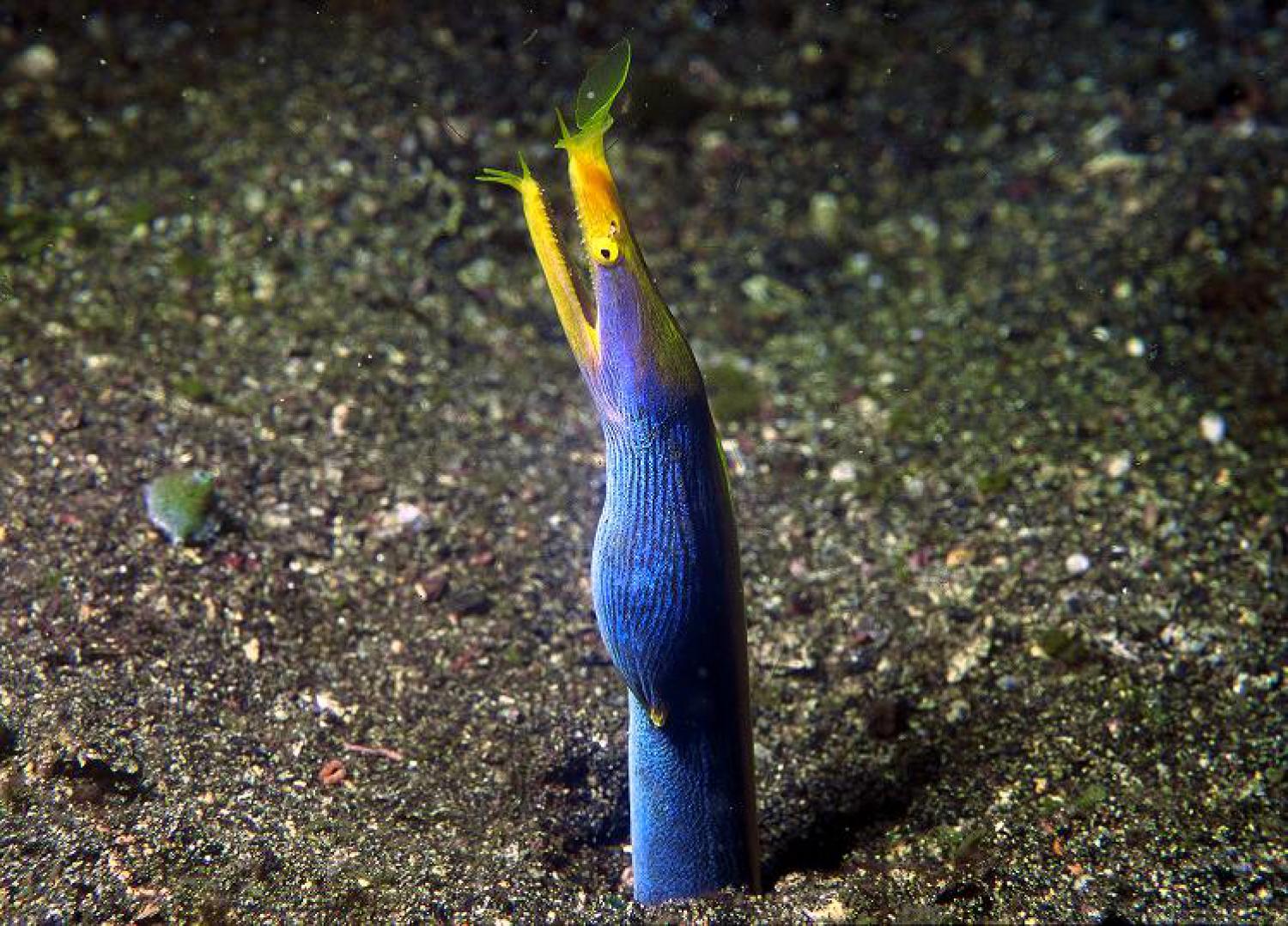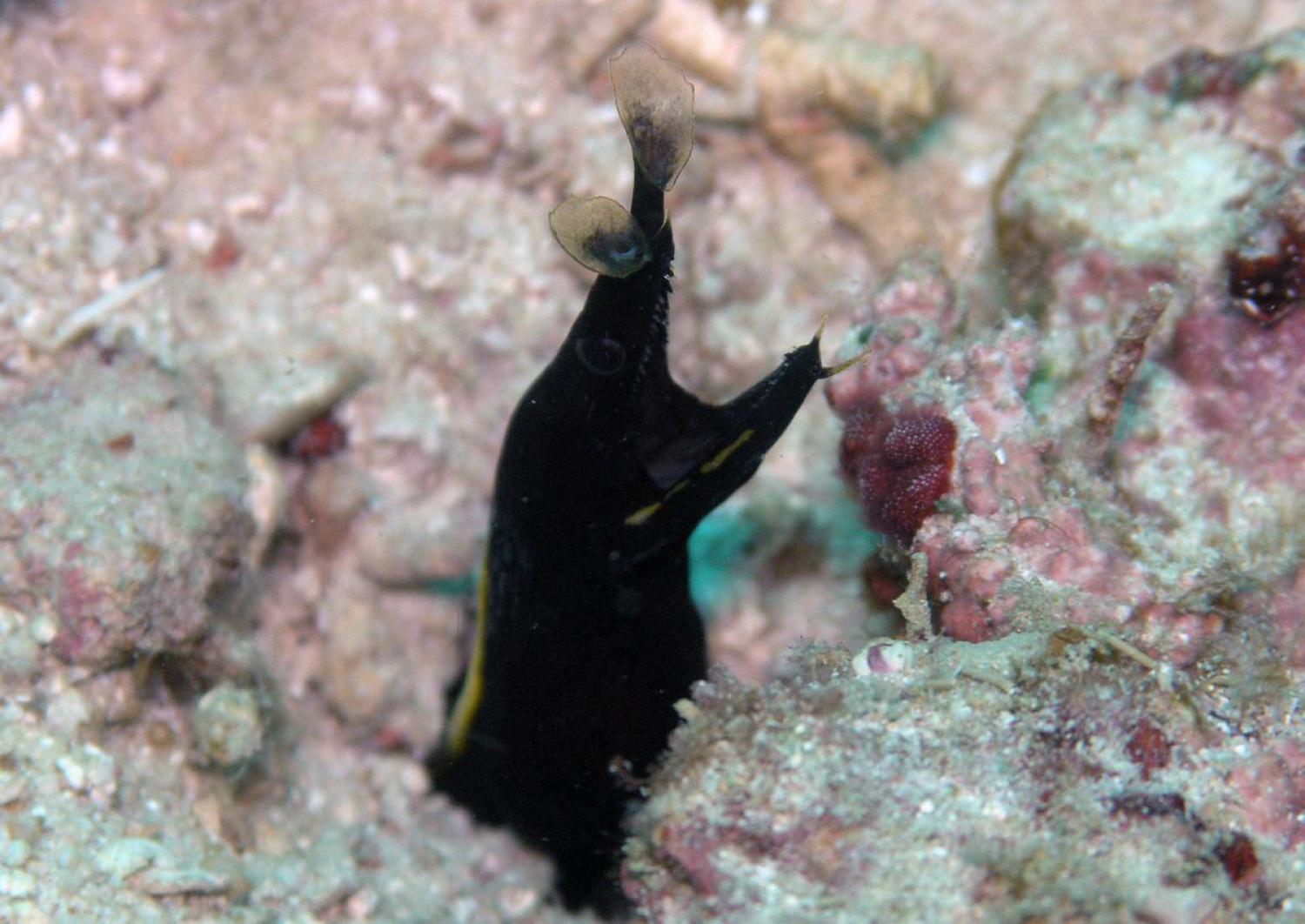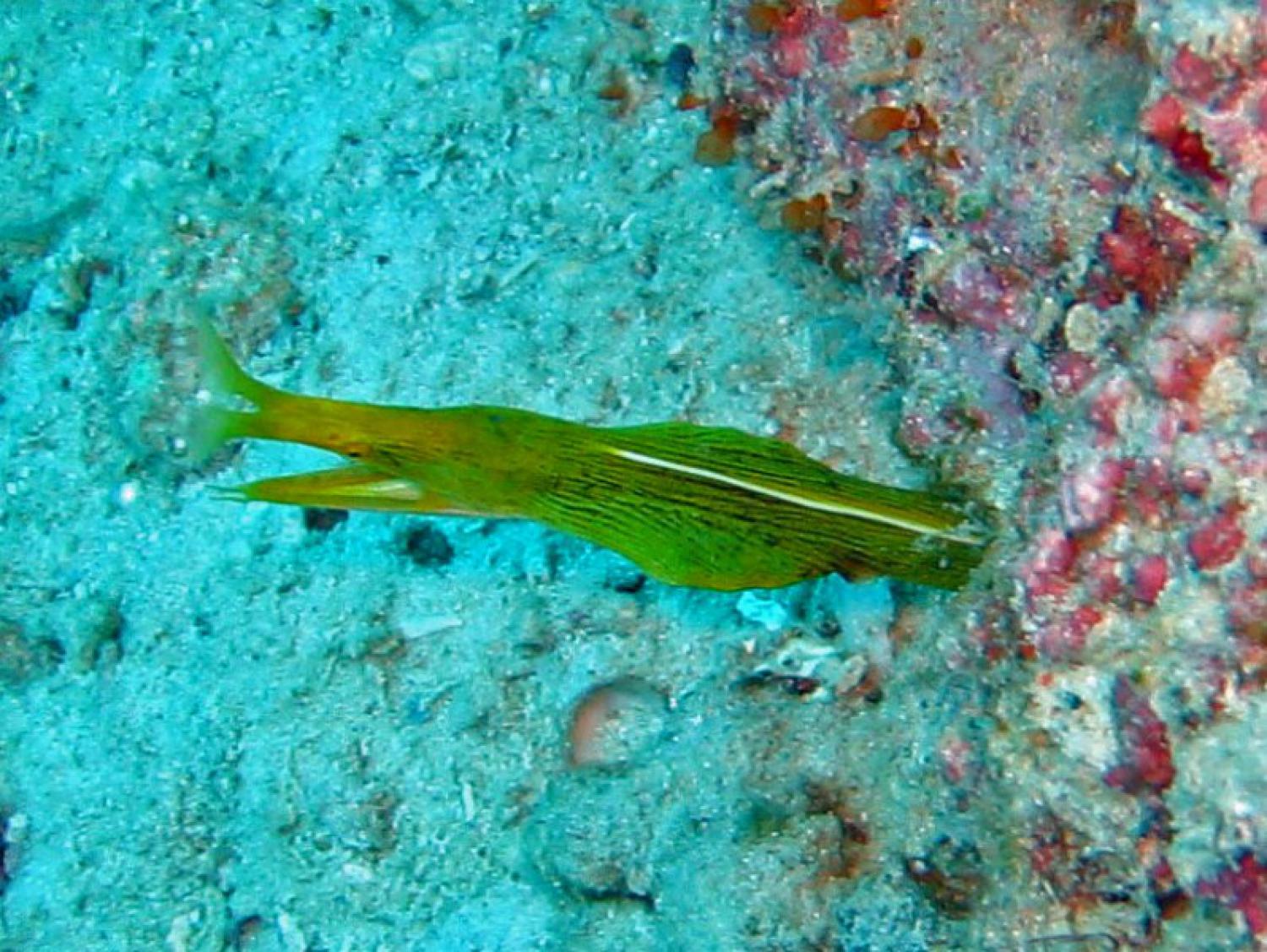Species of Thailand
Ribbon eel
Rhinomuraena quaesita
Samuel Garman, 1888
The ribbon eel (Rhinomuraena quaesita) or Bernis eel, is a species of moray eel, the only member of the genus Rhinomuraena. What is now known as R. quaesita also includes the former R. amboinensis. R. quaesita was used for blue ribbon eels and R. amboinensis for black ribbon eels, but these are now recognized as the same species. The ribbon eel is found in lagoons and reefs in the Indo-Pacific ocean, ranging from East Africa to southern Japan, Australia and French Polynesia. Although generally placed in the moray eel family Muraenidae, it has several distinctive features leading some to place it in its own family, Rhinomuraenidae.
The ribbon eel is an elegant creature bearing a resemblance to a mythical Chinese dragon with a long, thin body and high dorsal fins. The ribbon eel can easily be recognised by its expanded anterior nostrils. Based on observed colour changes, it is generally considered a protandric hermaphrodite (first male, then changing sex to female), although this has yet to be confirmed. Colour change related to sex change is not known from any other moray eel species. The presumed juveniles and subadults are jet black with a yellow dorsal fin, in adult males the black is replaced by blue, and adult females are entirely yellow or yellow with some blue to the posterior. The blue adult males range from 65 to 94 cm in length, while the larger yellow females can reach up to 130 cm. In captivity, the colour differences are not related to maturity or sex.
In the aquarium
Because most ribbon eels do not live longer than a month in captivity, some feel that this species should never be purchased except for people with experience in keeping morays in captivity. Ribbon eels have been observed in many cases to stop eating after being captured, although there are reports of them surviving and eating in captivity for 2 years or more. Higher levels of success have been achieved in public aquaria, where there are a few reported cases of spawning at facilities in Europe and North America.
With proper sized tanks, water flow, and depth of proper sand they can be kept for much longer in pairs. When keeping these it is critical that there is large amount of decor and large caves of rock or PVC piping to make them feel safe or else they will stress and die in the aforementioned manner. These morays can sometimes be able to be trained to eat inanimate foods by waving pieces of meat on snake feeding tongs. In some many cases fin-niping is a problem for obvious reasons.
Although captured for the aquarium industry, it remains common and widespread, and is not considered threatened.
This article uses material from Wikipedia released under the Creative Commons Attribution-Share-Alike Licence 3.0. Eventual photos shown in this page may or may not be from Wikipedia, please see the license details for photos in photo by-lines.
Scientific classification
- Kingdom
- Animalia
- Phylum
- Chordata
- Class
- Actinopterygii
- Order
- Anguilliformes
- Family
- Muraenidae
- Genus
- Rhinomuraena
- Species
- Rhinomuraena quaesita
Common names
- English:
- Black leafnosed moray eel
- Black ribbon eel
- Ribbon eel
- Ribbon moray
- French:
- Rhinomurène bleue
- Rhinomurène noire
Synonyms
- Rhinomuraena ambonensis, Thomas Barbour (1908)
Conservation status

Least Concern (IUCN3.1)
Photos
Please help us review our species pages if wrong photos are used or any other details in the page is wrong. We can be reached via our contact us page.
Range Map

- Similan Islands


